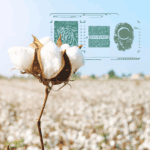The role of durability testing in sustainable product development
Prolonging a product’s life through quality, maintainability and reparability is becoming increasingly important as durability regulations are developed. Because of this, durability testing is becoming an essential part of sustainable product development. Products that are designed to be reusable and uphold their quality over time reduce the need for replacements, and therefore the amount of waste generated.
The manufacture of new products requires significant energy, raw materials, and water. The waste generated from discarded products also contributes significantly to environmental degradation.
These issues can be addressed by designing durable products.
Regulations of durability
The durability of a product is also an important consideration for several regulations, particularly in the EU.
The Ecodesign for Sustainable Products Regulation (ESPR) is the European Commission’s approach to more environmentally sustainable and circular products. It introduces the Digital Product Passport (DPP), which is designed to enhance transparency, accountability, and sustainability in the lifecycle of products. Durability is part of the information that is recommended to form a component of the DPP.
By providing consumers and regulators with detailed information about a product’s lifespan, repairability, and environmental impact, the DPP allows consumers to make informed choices, opting for durable products. It also holds manufacturers accountable for the longevity and sustainability of their products, discouraging practices like planned obsolescence and encouraging designs that extend product lifecycles.
The AGEC law (Anti-Waste for a Circular Economy) in France, particularly through the implementation of the Repairability and Sustainability Indices, plays a crucial role in promoting product durability.
The Sustainability Index replaces the Repairability Index from 2025 for certain product categories. It scores products on criteria such as resistance to stress and wear, ease of maintenance and commercial guarantee. The score must be clearly displayed for in-store sales on each item or nearby, and for online sales, it should be prominently shown on all relevant pages near the price. Whilst the Sustainability Index is currently focused on electrical and electronic equipment, starting with televisions and washing machines, it is likely to expand into other product categories and industries in the future.
AGEC law also awards a bonus to companies that can prove that their products are more durable, leading to a reduction on their mandatory ecomodulation fee.
Other regulations that refer to requirements for consumer products to be durable include
- European Union’s (EU) Strategy for Sustainable and Circular Textiles; published in 2022
- EU Waste Framework Directive, with its requirements for Extended Producer Responsibility (EPR) rules for textiles; expected to come into force in 2027
- US Environmental Protection Agency (EPA) has product specific data for durable goods and states that durable goods last three years or more
Durability testing
Brands that prioritise durability and sustainability through rigorous testing can differentiate themselves in the market. Consumers are increasingly looking for companies that are committed to sustainability, and verifying durability is a way to demonstrate this commitment.
By testing the durability of your products, you not only show a commitment to sustainability, but also contribute to the conservation of resources and reduction of waste.
In conclusion, durability testing is more than just a technical assessment; it’s a key component of sustainable product development that benefits both the environment and consumers. As regulations like the ESPR and AGEC law push for greater transparency and accountability, durability becomes an essential factor in product design and marketing. By ensuring that products are built to last, companies can reduce waste, conserve resources, and meet the growing demand for sustainability.
Eurofins can help demonstrate the durability of consumer products
The Eurofins technical team has created durability testing specifications for different products where extended life would deliver significant, positive impact reductions. These products are as follows
| Category | Product types |
| Durable fashion | Denim jeans, skirts and dresses Trousers and shorts T-Shirts, polo shirts and shirts (knitted) Pullovers Tops (woven) Socks and hosiery Swimwear Nightwear |
| Durable footwear | Boots Open-toe footwear Closed-toe footwear (casual and fashion) Athletic footwear |
| Durable workwear | Shirts Trousers |
| Durable product | Textiles Bed linen Table linen Bath linen Cookware |
To support the achievement of testing against these more durable, longer-lasting product specifications, Eurofins has developed two durable testing marks: “Durable SILVER” and “Durable GOLD”. Find out more about our durability testing services and how these could contribute to improvements in product sustainability or contact us to learn more.



